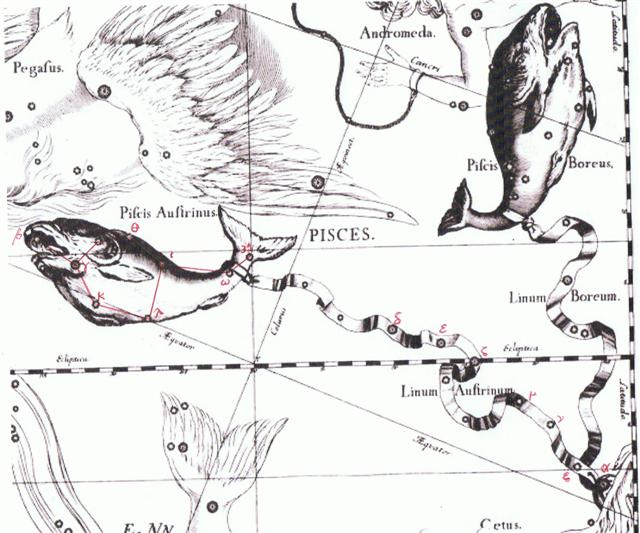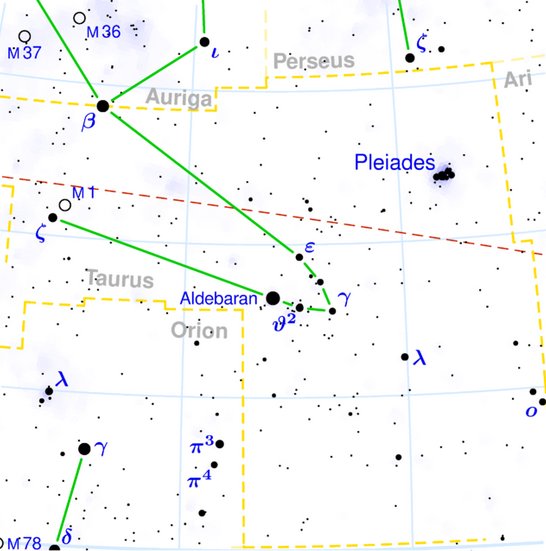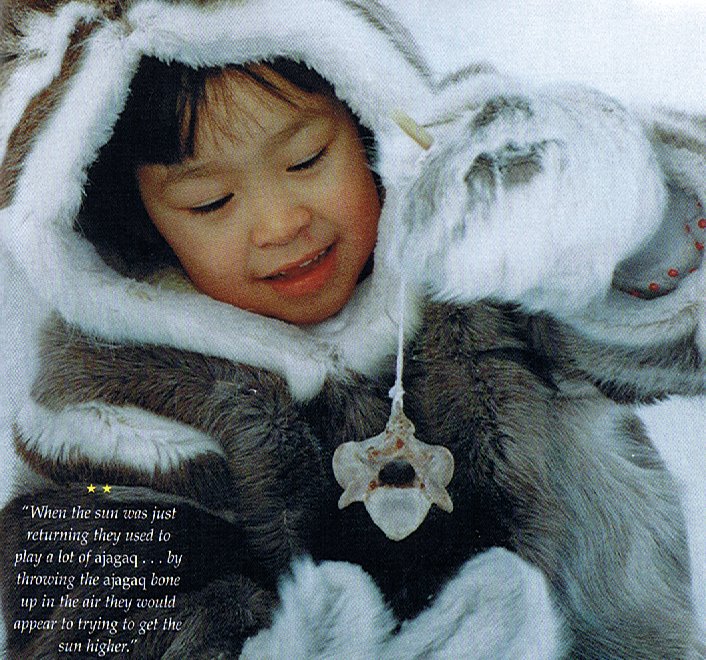There is hope. We can untangle this complicated structure. First there is the ancient 'Octopus' map of the sky. It does not move and we can ignore where the Sun for the moment happens to be. Instead we could read in this ancient star map where the Sun once upon a time would have returned after the dark and wet winter. Spring arrived with Ain (the 'eye' of the Sky Bull). This 'eye' (mata) probably refers to the 'face' (mata) of the Sun. At the other side of the year this 'eye' (the Sun) would later go away (oho) when the eyelid closed, wetting the eye:
I think Hevelius made the towel of Aquarius 'swallow' the Sun personified by μ (as in 'water ripples'), because the 'Fire' (the Sun) cannot be in 'the Water'.  ... This [σ Sagittarii] has been identified with Nunki of the Euphratean Tablet of the Thirty Stars, the Star of the Proclamation of the Sea, this Sea being the quarter occupied by Aquarius, Capricornus, Delphinus, Pisces, and Pisces Australis. It is the same space in the sky that Aratos designated as Water ... The ancient star maps were illustrated in order to help memory. Before the Sun rose with Taurus it was the wet winter season, in later days described as governed by a pair of 'fishes' - representing the pair of Moon 'faces', Waxing and Waning Moon. Sun ruled in the day-time and Moon in the night.  This pair of Fishes are not separate individuals but joined by 'strings'. Moon is not 2 'persons' but a single person. We can see how Hevelius has put Moon's waning phase (formed like C north of the equator) at the southern fish and Moon's waxing face (formed like C reversed) at the northern fish. In between is the right wing of Pegasus which shadows the new moon phase. Time runs from left to right, as in the rongorongo texts. The flexible bands of Pisces can be contrasted with the firm horns of the Sky Bull, and these winter 'strings' formed a mirror image of the V of the Bull: 
To play with strings at dawn would entangle the legs of the Sun, making him stay down.
... Etalook refers to the 'aagruuk' as 'labrets' (the circular lower-lip ornaments of some Western Arctic Eskimo groups, certainly evoke an astral image if we recall that early Inuit gaphic representations of stars were usually circular ...) giving them, it seems, an alternate name, ayaqhaagnailak, 'they prohibit the playing of string games': They are the ones that discourage playing a string game... That's what they're called, ayaqhaagnailak, those two stars... When the two stars come out where is no daylight, people are advised not to play a string game then, but with hii, hii, hii... toy noisemakers of wood or bone and braided sinew ...
|
